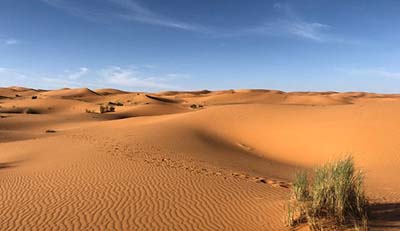(Basic) Definite and Indefinite Articles in English
Email this page
You use the definite article (the) with a noun that you already mentioned and the indefinite article (a or an) with a noun that is undefined.
These are the basic rules, but there are others that you should know.

Sarah Garnica | Pexels
Basic Rules
On the previous page, you learned that the definite article (“the”) is used before a noun that is specific.
This is the basic rule, but there are many more.
Rule 1. Specific or not specific
When you talk about a non-specific noun, you use the indefinite article (a/an). So, when you say, “John drives a nice car,” it could be any car. The focus is on John, not on the car he drives.
When you say “the car” or “the car John drives,” you are not talking about just any car; it is a specific car.
If you and I talk about John’s car and later you see a similar car on the street, you could say, “Look! That’s the car that John drives.”
Rule 2. Countries and geographical names with “the”
Sometimes you use “the” with some countries, large regions, deserts, oceans, mountain ranges, groups of islands (but not single islands), and so on.
the Philippines
the Amazon (River)
the Andes
the Arabian Desert

“The Sahara Desert”
Photo by Greg Gulik | Pexels
See more examples below.
Countries
the Czech Republic
the Democratic Republic of the Congo (DRC or Congo-Kinshasa)
the Ivory Coast
the Gambia
the Maldives (or the Maldive Islands)
the Netherlands
the People’s Republic of China
the Philippines
the Republic of the Congo (or the Congo Republic)
the United Arab Emirates
the United Kingdom (the UK)
the United States (the US)
Group of Islands
the Archipelago of the Recherche
the Azores
the Aleutian Islands
the Bahamas
the Banzhou Archipelago
the Bissagos Islands
the British Isles
the Canary Islands (or the Canaries)
the Coco Islands
the Faroe Islands (or the Faroes)
the Malay Archipelago
the Virgin Islands
Notes
1. Do not use “the” for single islands, for example, Antigua, Grenada, Maui, Saint Lucia.
2. An “archipelago” /ˌɑɚkəˈpɛləˌgoʊ/ is a group of islands. Another name for “island” is “isle,” which you often see used with proper nouns.
Bodies of Water
the Amazon
the Atlantic
the Caspian Sea
the English Channel
the Euphrates
the Ganges
the Gulf of Mexico
the Mediterranean (Sea)
the Mississippi (River)
the Nile (River)
the Pacific
the Tigris
Deserts
the Arabian Desert
the Atacama (Desert)
the Gobi (Desert)
the Kalahari (Desert)
the Mojave (Desert)
the Namib (Desert)
the Patagonian (Desert)
the Sahara (Desert)
the Sonoran (Desert)
the Thar (Desert)
Mountain Ranges
the Alps
the Andes
the Appalachians
the Carpathian Mountains
the Cascades (or the Cascade Range)
the Caucasus
the Himalayas
the Pyrenees
the Rockies (or the Rocky Mountains)
the Scottish Highlands
the Sulaiman Mountains
the Urals
Other Geographical Points and Features
the American South
the Equator
the north of Canada
the Middle East
the North
the Pacific Ring of Fire (or the Rim of Fire)
the South Pole
the South
the Tropic of Cancer
the Tropic of Capricorn
Up Next: Geographical Names
Continue the lesson to learn geographical names without articles.